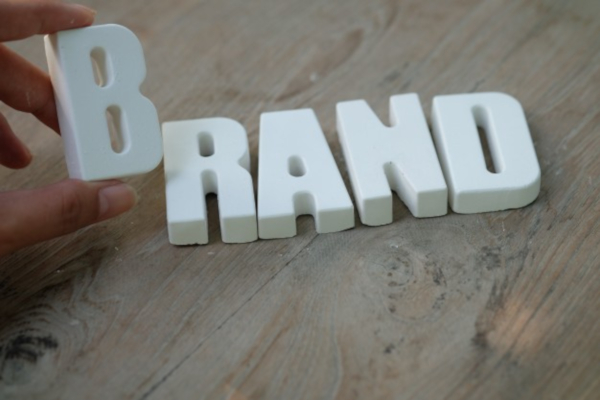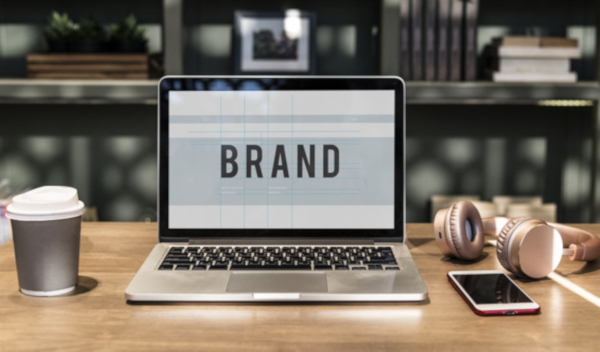YYour brand identity is an integral part of your business. It is the product of months and years of hard work trying to build a good reputation. Sometimes, it’s even used as a measurement against which a business’s success is determined. You cannot be considered a good branding designs if you have not created an image that the public can trust.
Your brand identity is how people perceive you. Every attempt at making yourself known, every effort at reinforcing your brand, every sound, every color, every name that can be attributed to who you are as a business is your brand identity.
The Importance of Brand Identity

Your brand identity, unlike your revenue, is unquantifiable. It doesn’t come to you in numbers, percentages, or cash. But, ironically, businesses spend a considerable amount of their time, resources, and manpower to build their brand. That’s because the benefits you will reap once your efforts prove to be successful are countless.
You will instantly be recognizable to your customers. They will associate your brand identity with your product or services, and this identity will forge the connection with you and your customers, which, hopefully, will translate into customer loyalty later on.
Do you know what Nike is? Or Adidas? What about Apple? Of course you do. That’s because these brands did their assignment. They worked on strengthening their brand identity and now they are reaping the benefits, and they will continue to do so for many years to come.
If your brand identity communicates trustworthiness, people will trust you. If it reflects a love for aesthetics and a devotion to producing quality work, they will commit to your products without question. You don’t need to buy an iPhone for you to know that it will be worth your money, Apple’s brand identity will just tell you that.
How to Develop A Strong Brand Identity

Creating a strong identity can make the difference between your company’s success and its failure. If you want to stay competitive in this industry, you should start thinking about how you can boost your brand identity. Start by following these tips:
1. Get to know what you are up against. You need to stay on top of the game, and the only way you can do that is to make sure that you are not running behind your competitors. Take a good look at your marketplace. Who are your competitors, and what do you have against them? This will provide a good basis for you to find an angle that your company can leverage.
2. Give yourself a deadline when making creative decisions. It can be easy to get lost in the process of designing your logo, perfecting your tagline, and creating your website that you begin to lose sight of the bigger picture. A hard deadline will allow you to stay focused, while also giving you enough chance to have complete creative freedom.
3. Get to know who you are. Brand identity is all about giving people the chance to get to know who you are, and you can’t do that if you yourself don’t have any clue what your brand is really all about. Start doing a thorough introspection. If your brand was a person, who would it be? What would be its values, its mission, its strengths? If your brand was to go on a first date with a customer, what would it say about itself? Understand exactly what is holding this whole enterprise together and let the public in on the secret.
What is Brand Identity Design?

In order to effectively reinforce your brand, you need to create a language through which you can communicate to your loyal patrons and targeted market. This will come in the form of your brand identity design which works by serving as a coherent message which ties together all your company values, signage, business cards, uniforms, menus, shopping bags, and many more.
All these seemingly separate elements will work together to communicate your brand’s identity to your ideal customers. If done correctly, your brand identity design will resonate with your target audience and differentiate you from your competitors.
Key Elements of Brand Identity Design

Building a uniform system for your brand design trends will allow you to meet the demands of different media and present yourself through different platforms, while still presenting a cohesive identity which your customers can identify.
1. Logo or Wordmark
A logo is a form of graphic symbol which can represent your whole brand without the use of words, while a wordmark, as its name suggests, is just the words of your company or product name in specifics. It can be difficult to decide which of the two you should use for your brand, but there’s really one factor to consider: will a symbol help you show that your business is unique, or will a wordmark achieve that better?
For example, Coca-Cola uses a wordmark instead of a logo, since the founders believed that the double C’s would look good in advertising, and they were obviously right about that. While Nike uses a simple logo design that is said to symbolize the wing of the famous Greek Goddess of Victory, Nike. Both very different companies use very different approaches to their brand identity design but both attempts worked well. It’s all about understanding what you need and acting on it.
2. Key Colors
Your corporate color palette is usually defined by the colors you’ve used in your logo, since these are the colors by which people will know you. A brand’s key color is usually just one or two complementing hues, but it can be more complex for others. Make sure you choose your colors wisely, since these will be with your brand for a long time. Everything you will produce under your brand’s name, from products and services to marketing and advertising attempts, they will all be under the colors you pick.
3. Corporate Typefaces
Your typeface is a part of the brand identity design which you will be presenting to the public. As with the colors, the typefaces that you choose usually come from your logo. But in cases where the the styles in your cool logo are too decorative for letters, proposals, and other formal business documents, you can find complementing typefaces to use for your marketing materials to maintain a unified brand identity.
4. Consistent Style for Images
Naturally, you should not use the same image over and over again, but it’s necessary that you create a consistent look and feel to the visuals you use to help your customers connect each one to your brand. Maybe the photos are brightly lit and the subject is looking right into the camera. Or maybe there’s a bright red streak against a gray background in all of your photos. You don’t have to limit yourself to images either. You can use line art, illustrations, or even charts and graphs. Whatever you choose, use a consistent style.
5. Graphic Elements
There are many things that you can use to lead people to your brand, and most of them are tiny, often unnoticed details. It could be a handmade texture, a line style treatment, a unique use of white space or color block. The right combination of all of these can help you create the perfect brand identity design.
Conclusion
Being a successful brand is more than just earning more than you spend, paying your bills on time, and producing good products. Although all of these things are important for your business’s day-to-day survival, in the long run, what will matter most is how you are perceived by the customers to whom you owe your brand’s existence.
Related Posts
Best Poster Designs 2023: Ideas and Tips
Hit and Miss of Olympic Logo Designs from 1924 till 2023
10 Iconic Moments Photographed in 2023 Rio Olympics
Top 5 Logo Design Trends of 2023
2023 Packaging Design Pentaward Winners
Digital Design Trends for 2023
Best Travel Apps for 2023
9 Script Fonts for 2023
10 Best Free Fonts for 2023
10 Best Mobile Games of 2023
Logo Design Strategies for 2023
Top 9 Web Design Trends for 2023
10 Most Popular Graphic Design Trends of 2023
Visual Design Trends to Look Out in 2023
Google Play Best Games and Apps for 2023